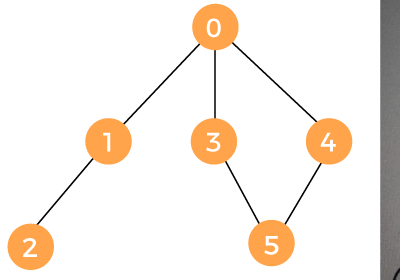BFS Algorithm in JavaWhat is BFS?Breadth-First Search (BFS) is based on traversing nodes by adding the neighbors of each node to the traversal queue starting from the root node. The BFS for a graph is similar to that of a tree, with the exception that graphs may have cycles. In contrast to depth-first search, all neighbor nodes at a given depth are investigated before proceeding to the next level. BFS AlgorithmThe following are the steps involved in employing breadth-first search to explore a graph:
BFS ApplicationsBecause of the algorithm's flexibility, Breadth-First Search is quite useful in the real world. These are some of them:
Example BFS TraversalTo get started, let's look at a simple example. We'll start with 0 as the root node and work our way down the graph. 
Step 1: Enqueue(0) Queue
Step 2: Dequeue(0), Enqueue(1), Enqueue(3), Enqueue(4) Queue
Step 3: Dequeue(1), Enqueue(2) Queue
Step 4: Dequeue(3), Enqueue(5). We won't add 1 to the queue again because 0 has already been explored. Queue
Step 5: Dequeue(4) Queue
Step 6: Dequeue(2) Queue
Step 7: Dequeue(5) Queue The queue is empty now so we'll stop the process. Breadth-First Search Java ProgramThere are several approaches of dealing with the code. We'll mostly discuss the steps involved in implementing a breadth first search in Java. An adjacency list or an adjacency matrix can be used to store graphs; either method is acceptable. The adjacency list will be used to represent our graph in our code. When implementing the Breadth-First Search algorithm in Java, it is much easier to deal with the adjacency list since we only have to travel through the list of nodes attached to each node once the node is dequeued from the head (or start) of the queue. The graph used to demonstrate the code will be identical to the one used in the previous example. BFSTraversal.java Output: Breadth First Traversal for the graph is: 0 1 3 4 2 5
Next TopicCountDownLatch in Java
|
 For Videos Join Our Youtube Channel: Join Now
For Videos Join Our Youtube Channel: Join Now
Feedback
- Send your Feedback to [email protected]
Help Others, Please Share










